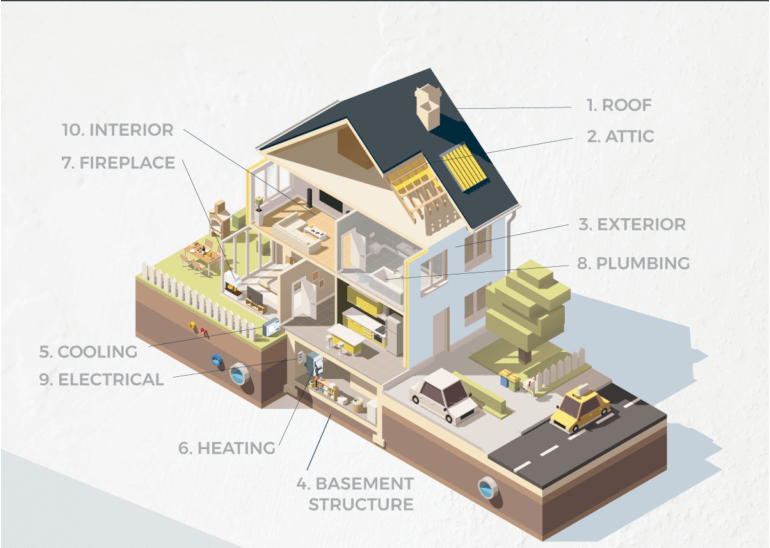What's Included in a Typical Home Inspection?


A home is the biggest purchase most people will ever make, and a home inspection is always recommended before buying a home. It's important to realize the condition of your investment, as well as anticipate hidden costs.
While some little quirks may be nothing to worry about, there may be more serious issues that only a professional home inspector can assess. (Click here to find a home inspector in your area)
A large part of surviving the home inspection is understanding what to expect from a home inspection in general. Here’s some helpful info and an infographic that shows you what’s covered in a typical home inspection.
This includes the condition of:
Note that a home inspector may or may not walk on your roof. In many cases they can perform a visual inspection from a ladder.
The home inspector will look at the insulation and ventilation of unfinished spaces, including:
The condition of the cooling system, location of thermostat, energy source and the type of cooling system you have in the home.
The condition of the heating system, location of thermostat, energy source and the type of heating system you have in the home.
Plumbing tends to get the most attention due to the impacts a water penetration can have on a home. The home inspector will check:
This section includes:
This includes a representative number (some inspectors check all) of:
Your home inspector will deliver findings from all of these areas in a home inspection report. Depending on which home inspection software they use, it may look different than a Spectora sample home inspection report. Regardless, you should have high-quality images and descriptions that help you work with your real estate agent to negotiate fixes and/or concessions from the seller.
Most home inspectors will have options for what they call add-on services that are related, but not required for an inspections:
